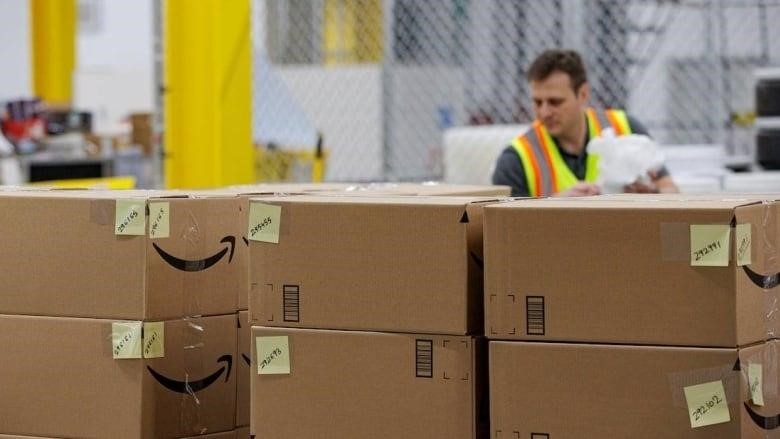
The largest private-sector union in the country thinks it can organize workers in corporations where others have failed
British Columbia has changed its labor laws, which has led Canada’s largest private-sector union to focus on the province as it tries to organize Amazon workers.
At a news conference outside one of Amazon’s fulfillment centers in New Westminster, B.C., last week, Unifor started a campaign to unionize Amazon workers.
It’s the latest effort by a union to organize in Canada, and if it works, the call center would be the first Amazon job in the country to be unionized.
In an interview after the event, Gavin McGarrigle, the western regional director for Unifor, said, “We have one of the best labor laws here.”
McGarrigle was talking about changes to British Columbia’s Labour Relations Code that took effect in June 2022 and make it easier to start a union.
Now, the code says that they can apply for certification if 55% of employees sign union cards during an organizing drive. Before, the B.C. Labour Relations Board (LRB) needed 45% of employees to sign cards, and then a majority of employees had to vote in favor of organizing at a vote held by the board at the workplace.
McGarrigle said that this makes it impossible for the company to change the outcome of the vote.
“Workers don’t have to go through the intimidation of a vote where companies like Amazon will spend weeks sending them anti-union messages and trying to convince them that it’s not a good idea to join the union,” he said.
Anelyse Weiler, an assistant professor of sociology at the University of Victoria, says that workers have benefited from not having to vote by ballot.
“If you submit an application for your workplace, it can be handled much more quickly, and it’s a big deal if your boss doesn’t like you trying to form a union,” she said.
Data from the LRB shows that in the six months after the Labour Relations Code Amendment Act went into effect last year, the number of groups applying for union certification almost doubled, from 58 to 114.
Amazon is “a great place to work,” says the company
People who work at Amazon Canada have expressed many worries.
David Bergeron-Cyr, vice president of the Confédération des syndicats nationaux, said one of them is being asked to package and lift 400 boxes in one shift, which is dangerous and can lead to injuries.
A former Amazon delivery driver told CBC News that he was expected to deliver 17 packages per hour and that, as a subcontractor, he would not be paid extra for working past his shift.
Ryma Boussoufa, a spokesperson for Amazon Canada, said in a statement that the company doesn’t think it’s necessary for its employees to join a union and that it prefers to work directly with its staff to make the company “a great place to work.”
According to a disclosure document sent to the U.S. Department of Labor, Amazon spent $14 million US in 2022 to fight unionization efforts in the U.S.
Some former Amazon workers in Canada told CBC News that they were fired for trying to get their coworkers to work together.
The latest one is the Unifor drive
Teamsters Canada and the Confédération des syndicats nationaux are two unions that have tried to organize workers at the corporation’s sites in the past.
McGarrigle says that Unifor is the best union to organize Amazon workers in Canada because of its size. He also says that the union has “dozens” of organizers in B.C.
Last year, workers at an Amazon warehouse in New York were the first to join a union.Chris Smalls, president of the Amazon Labor Union, which helped lead the campaign in New York, spoke at the June 21 launch of the New Westminster campaign.
Weiler from UVic says that the event shows that Unifor is trying to unionize Amazon workers.
But she says that an established union going in to try to organize is different from what happened in the U.S., where workers ran their own campaign and won.
She said, “What made them really strong was that they were united from the bottom up.”
